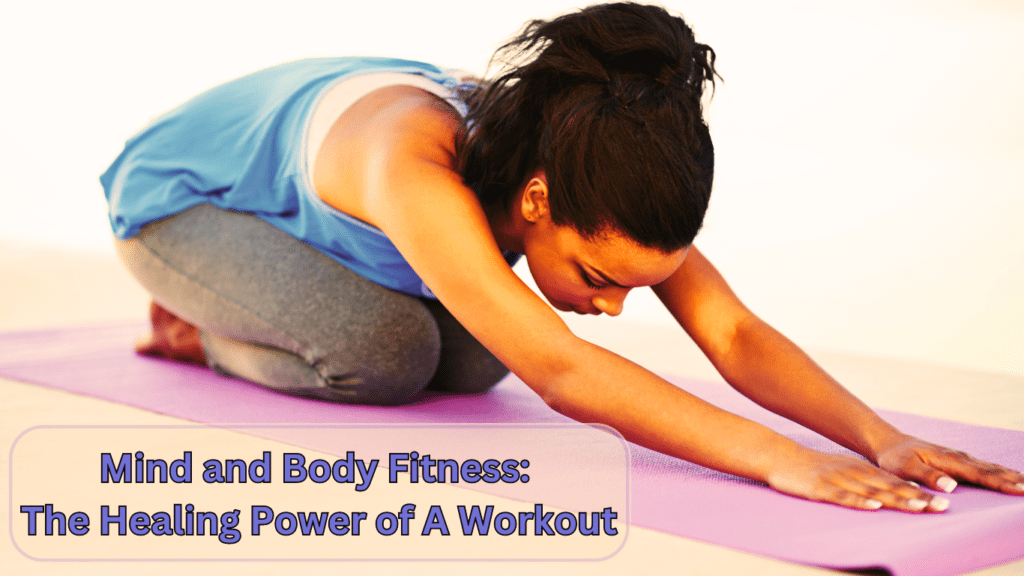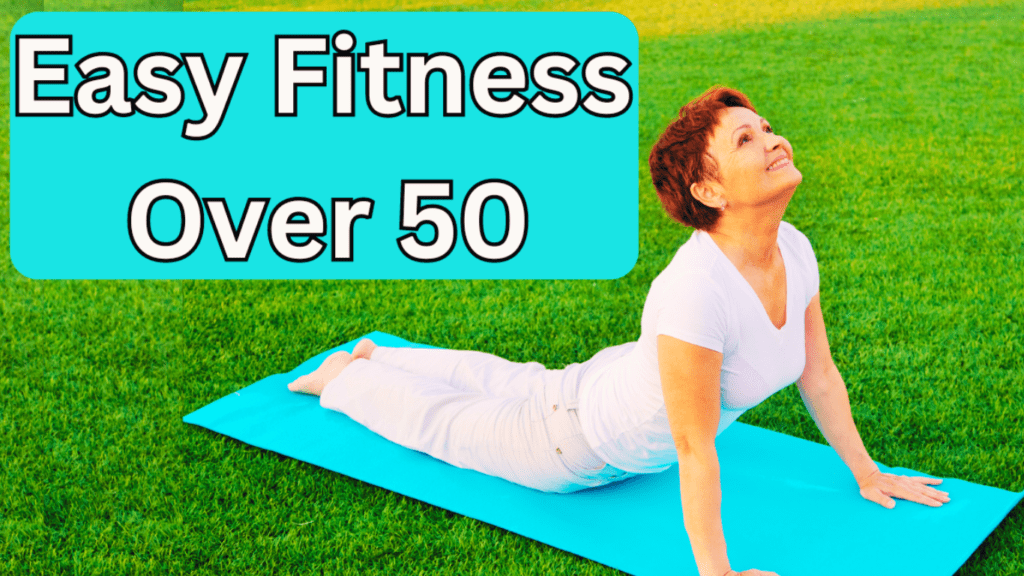How to Start Hiking: The Perfect Beginning to Your Fitness Journey
In this article, we will guide you through how to start hiking by sharing valuable tips, inspiring insights, and essential motivation to help you embark on an incredible journey toward fitness and a deeper connection with nature.
If you’re searching for a simple, enjoyable way to improve your fitness while connecting with nature, hiking is the perfect choice. Whether you’re a beginner, a fitness enthusiast, or someone looking to ease back into an active lifestyle, hiking is versatile and adaptable to all fitness levels. Before lacing up your boots, let’s explore why hiking is an ideal way to kick off your fitness journey.
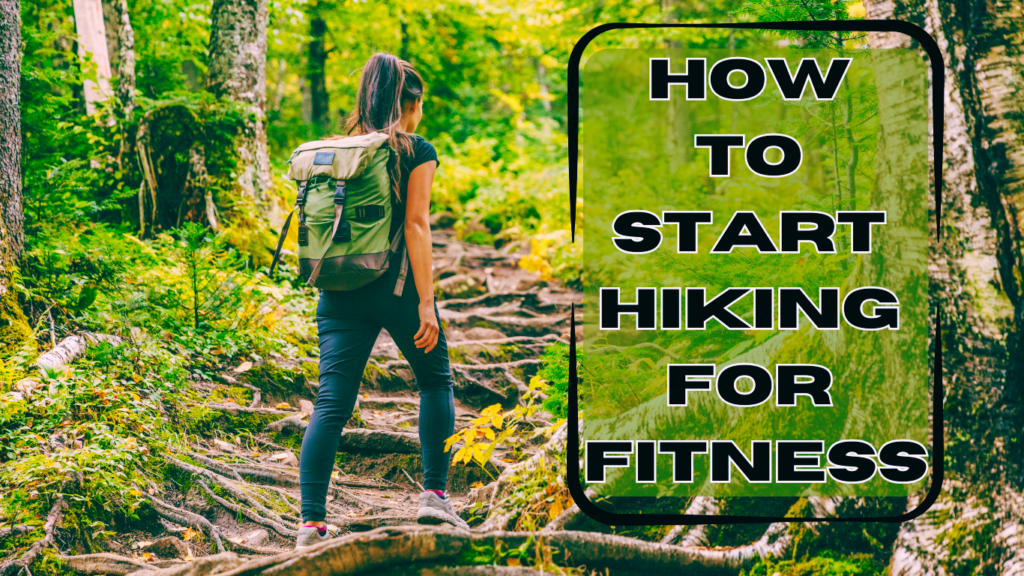
Why Hiking?
Hiking offers a refreshing alternative to indoor workouts. Here’s why it’s an excellent starting point for anyone aiming to boost their fitness:
- Versatility: Suitable for all fitness levels, from beginners to experienced athletes.
- Low barrier to entry: Start slow and build up your endurance over time.
- Freedom and flexibility: No strict routine, just you, nature, and your own pace.
This guide on how to start hiking will provide step-by-step strategies to help you reach your fitness goals, no matter where you’re starting from.
Physical Benefits of Hiking
Hiking is a full-body workout with multiple physical advantages:
- Cardiovascular health: Hiking elevates your heart rate, improving overall heart function and endurance.
- Muscle strengthening: Climbing trails targets your legs, core, and back muscles, enhancing muscle endurance.
- Fat loss: Depending on the trail and your body weight, hiking can burn 400-700 calories per hour, making it an effective way to support long-term fat loss.
Unlike indoor exercise routines, hiking combines physical exertion with the enjoyment of the great outdoors, making it feel less like a chore and more like an adventure.
Subscribe And Get Our Free E-Book:Unlocking The Power Of Nutrition-Supplements, Substitutes, and Superfoods!
Mental Health Benefits
The mental health benefits of hiking are equally significant:
- Stress relief: The physical activity of hiking triggers the release of endorphins, helping reduce stress and anxiety.
- Cortisol reduction: Being outdoors lowers levels of the stress hormone cortisol, which can improve mental clarity and reduce fatigue.
- Mood boost: Spending time in nature is calming and refreshing, promoting a positive mental state and emotional well-being.
Whether you prefer the solitude of a peaceful trail or the camaraderie of a group hike, the mental and emotional gains are hard to ignore.
Why This Guide is Unique
Most hiking guides focus solely on routes and gear, but this guide on how to start hiking is fitness-focused. We cater to different fitness levels with clear strategies:
- For beginners: We’ll guide you through easy trails and help you build your endurance slowly.
- For hobbyists: Learn how to push yourself with moderate trails to maintain and improve your fitness.
- For out-of-shape individuals: Discover how to use hiking as a gentle, effective way to return to physical activity and set realistic, achievable fitness goals.
In this guide, the focus is not only on how to hike but also on how to turn it into a consistent fitness routine that fits your lifestyle.
Updated Chart: Calories Burned by Hiking Terrain, Speed, and Duration
| Trail Type | Speed | Calories Burned per Hour | Calories Burned in 30 Min | Calories Burned in 90 Min |
|---|---|---|---|---|
| Flat Terrain | 2 mph | 240 calories | 120 calories | 360 calories |
| 3.5 mph | 370 calories | 185 calories | 555 calories | |
| Hilly Terrain | 2 mph | 430 calories | 215 calories | 645 calories |
| 3.5 mph | 550 calories | 275 calories | 825 calories | |
| Mountainous Terrain | 2 mph | 500 calories | 250 calories | 750 calories |
| 3.5 mph | 670 calories | 335 calories | 1,005 calories |
Explanation of the Chart:
- Calories Burned per Hour: This column shows the estimated calories burned by a person weighing 155 lbs while hiking at a particular speed on different types of terrain (flat, hilly, or mountainous).
- Calories Burned in 30 Minutes: This column breaks down the calorie burn into 30-minute intervals, providing a quick estimate for shorter hikes. For example, if you hike for 30 minutes on flat terrain at 2 mph, you’ll burn approximately 120 calories.
- Calories Burned in 90 Minutes: This column shows the total calories burned in 90 minutes, helping readers gauge the benefits of longer hikes. For example, a 90-minute hike on mountainous terrain at 3.5 mph could burn over 1,000 calories!
Hiking is more than just walking in nature—it’s a way to improve your health, both physically and mentally, while enjoying the beauty of the outdoors. With this guide on how to start hiking, you’ll have all the tools and knowledge needed to embark on this journey, regardless of where you’re starting.
Benefits of Hiking for Fitness
Hiking is more than just a leisurely walk through nature—it’s a powerful fitness tool that helps you burn calories, build strength, and improve your overall endurance. Whether you’re strolling along flat trails or tackling steeper inclines, hiking offers a full-body workout that benefits both your physical and mental health. In this part of the guide on how to start hiking, we’ll focus on how hiking can help you burn calories, shed extra weight, and build the strength and endurance you need for a healthier lifestyle.
Burning Calories and Losing Weight
Hiking is an excellent way to burn calories and achieve weight loss. Unlike other forms of exercise that can feel repetitive, hiking provides the added benefit of constantly changing scenery, making it an enjoyable way to stay active. The number of calories you burn while hiking depends on various factors, including the trail’s difficulty, your speed, and the terrain.
Here’s a general overview of how calories are burned depending on these factors:
| Trail Type | Speed | Calories Burned per Hour (for a 155 lb person) |
|---|---|---|
| Flat terrain | 2 mph | 240 calories |
| Flat terrain | 3.5 mph | 370 calories |
| Hilly terrain | 2 mph | 430 calories |
| Hilly terrain | 3.5 mph | 550 calories |
| Mountainous terrain | 2 mph | 500 calories |
| Mountainous terrain | 3.5 mph | 670 calories |
Flat vs. Hilly or Mountainous Trails: As you can see, hiking on hilly or mountainous trails burns more calories than walking on flat terrain. This is because your body has to work harder to navigate the uneven ground and inclines, requiring more energy and thus burning more calories. When learning how to start hiking, starting with flat or mildly hilly trails is a good idea, especially if you’re a beginner. As your fitness improves, you can increase the intensity by choosing more challenging routes.
Enhancing Calorie Burn: Once you’re comfortable, you can further boost your calorie burn by adjusting three key factors:
- Distance: The longer you hike, the more calories you’ll burn.
- Speed: Increasing your speed, even slightly, will elevate your heart rate and help you burn more calories.
- Incline: Hiking uphill engages more muscles, especially your legs and core, forcing your body to work harder.
By combining these factors, you’ll not only enjoy the scenery but also maximize the physical benefits of your hike. As you progress, you’ll see noticeable changes in your stamina, muscle tone, and overall fitness levels.
Building Strength and Endurance
One of the greatest advantages of hiking is that it builds strength in multiple muscle groups, without the need for special equipment. The natural terrain provides a full-body workout that targets muscles we use daily but often overlook in standard workouts. Hiking works primarily on:

- Leg muscles: As you climb and descend, your quads, hamstrings, and calves are constantly engaged.
- Core: Navigating uneven terrain requires a strong core to maintain balance and stability.
- Glutes: Inclines and uneven surfaces force your glutes to work harder, leading to improved lower body strength.
- Back: Carrying a backpack or using trekking poles will engage your back muscles, improving posture and upper body strength.
In addition to muscle strengthening, hiking improves your endurance over time. When you hike regularly, your cardiovascular system adapts, becoming more efficient at delivering oxygen to your muscles. This leads to increased stamina, allowing you to hike longer and tackle more difficult trails. Over time, you’ll find that your heart rate becomes more stable, and activities that once felt challenging will become easier.
Mental and Emotional Benefits of Hiking
The mental and emotional benefits of hiking are just as significant as the physical ones. In today’s fast-paced world, taking the time to disconnect and immerse yourself in nature can have profound effects on your mental well-being. Hiking has been shown to reduce stress and anxiety by promoting the release of endorphins, the body’s natural mood enhancers. Whether you’re walking along a quiet forest path or admiring the view from a mountain peak, the combination of physical activity and natural beauty creates a powerful sense of relaxation and calm.
Connecting with Nature: One of the unique aspects of hiking is that it allows you to connect with nature. Studies have shown that spending time outdoors can reduce cortisol levels, the stress hormone that can lead to burnout and fatigue. Being surrounded by natural landscapes helps you focus on the present moment, offering a break from daily worries and responsibilities. This connection with nature can also improve your sense of well-being, boost creativity, and enhance emotional resilience.
In summary, how to start hiking involves more than just choosing a trail and walking—it’s about making a conscious decision to improve both your physical and mental health. By understanding the benefits of hiking, from burning calories and losing weight to building strength and endurance, you’ll be better equipped to achieve your fitness goals. And as an added bonus, the mental and emotional rewards of hiking will help you maintain a healthy, balanced lifestyle.
How To Start Hiking for Different Fitness Levels
Hiking is a fantastic way to improve your fitness while enjoying the beauty of the outdoors. One of the best aspects of hiking is that it’s accessible to people of all fitness levels. Whether you’re a complete beginner, a hobbyist looking to make hiking a regular activity, or someone trying to get back into shape, there’s a trail and a pace that can work for you. In this section of the guide on how to start hiking, we’ll dive into how you can tailor your hiking experience based on your current fitness level. We’ll cover everything from choosing the right trails and setting a pace to tracking fitness metrics and selecting the proper gear.
For Beginners: Starting Slow and Building Confidence
If you’re new to hiking, the key is to start slow and gradually build confidence and fitness over time. Hiking can be a low-pressure, enjoyable way to get moving, but it’s important not to overdo it on your first few outings.
Choosing the Right Trail: As a beginner, you should start with easy, flat trails that are under 3 miles long and have little to no elevation gain. These low-intensity hikes allow you to get used to walking on uneven terrain without exhausting yourself. Apps like AllTrails and Komoot are great resources for finding beginner-friendly trails near you. They offer detailed maps, trail reviews, and difficulty ratings to help you pick a trail that matches your skill level.
Setting a Realistic Pace: When you’re just figuring out how to start hiking, it’s crucial to maintain a pace that’s comfortable. A speed of around 2-3 mph is ideal for beginners. Aim to walk for 30-45 minutes at first, and as your fitness improves, you can gradually increase the duration of your hikes. Don’t worry about speed or distance initially—what matters is getting comfortable with the activity and building up your endurance over time.
Fitness Metrics: For beginners, hiking at a leisurely pace can burn around 200-300 calories per hour, depending on your body weight and the terrain. One key to tracking your fitness progress is understanding heart rate zones. As a beginner, aim to stay in the aerobic zone, which is roughly 50-70% of your maximum heart rate. This helps your body burn fat more efficiently while keeping the workout manageable.
Essential Gear: You don’t need much to start hiking, but a few basics will make your experience more comfortable:
- Hiking shoes: Invest in a pair of basic hiking shoes with good grip and support.
- Lightweight clothing: Choose moisture-wicking, breathable fabrics.
- Backpack and hydration: A lightweight backpack with enough room for essentials, and make sure to carry at least 1 liter of water per hour of moderate activity.
For Hobbyists: Hiking as a Regular Activity
If you’re a hobbyist, hiking is likely something you already enjoy, but now you’re ready to make it a regular part of your fitness routine. The goal here is to challenge yourself with more intense trails, increase your speed, and keep pushing your endurance.
Progressing to Moderate Trails: As you advance, you’ll want to tackle intermediate trails that range from 3-6 miles with a bit more elevation gain. These hikes will be more demanding on your muscles and cardiovascular system, offering a moderate-intensity workout. Try mixing flat and inclined trails to challenge yourself and engage different muscle groups, which will improve both strength and endurance.

Increasing Speed and Distance: A good target for hobbyists is to aim for 3-4 mph on longer hikes, around 5-8 miles. To increase hiking speed and endurance without risking injury, focus on training your body gradually. Add small increments to your hiking distance or speed each week, and don’t forget to take rest days to allow your muscles to recover.
Fitness Metrics: For moderate hiking, you can expect to burn around 350-500 calories per hour, depending on the trail and your hiking speed. Using a heart rate monitor will help you track your cardiovascular performance. For improved fitness, try to maintain a heart rate that stays in the higher aerobic zones (around 70-85% of your maximum heart rate), which will help boost your cardiovascular endurance over time.
Fitness Gear: As you hike more regularly, it’s a good idea to upgrade your gear for better comfort and support:
- Hiking boots: These offer more ankle support and durability for tougher trails.
- Trekking poles: These can help reduce strain on your knees during steep ascents and descents.
- Fitness trackers: Consider investing in a fitness tracker or smartwatch to monitor your steps, heart rate, and overall progress during your hikes.
For People Who Are Out of Shape: Starting the Journey to Fitness
If you’re someone who’s out of shape and looking to use hiking as a way to return to fitness, it’s important to start slowly and listen to your body. Hiking offers a great way to engage in low-impact cardio, making it an excellent choice for those looking to ease back into exercise.
Starting Slow and Listening to Your Body: When you’re out of shape, the key is to choose flat, short trails (under 2 miles) and focus on the time spent walking rather than the distance. Start with hikes that last around 20-30 minutes, and allow yourself to take rest stops along the way. Gradually, as your fitness improves, you can add distance or increase the duration of your hikes.
Using Hiking as a Low-Impact Cardio Workout: One of the benefits of hiking is that it can be adapted to any fitness level. Start with flat terrain to minimize stress on your joints and avoid injuries. As you progress, you can gradually introduce small inclines to boost your calorie burn and strengthen your muscles. Increasing the pace of your walk or adding a slight incline over time will help you improve your cardiovascular health without putting too much strain on your body.
Fitness Metrics: For beginners who are out of shape, hiking can burn around 150-250 calories per hour when walking at a slow pace on flat terrain. Keep track of your heart rate to ensure you’re staying in a safe and effective zone. Aim to walk at around 50-60% of your maximum heart rate, which will allow your body to adjust to the new activity while gradually improving your cardiovascular fitness.
Mental Approach: When you’re starting from a less active state, it’s important to focus on the mental aspects of hiking. Set small, achievable goals, such as completing a certain number of hikes per week or increasing your distance slightly. This will help you build confidence and stay motivated. Tracking your progress over time—whether through a fitness app or a simple journal—can also give you a sense of accomplishment as you hit each new milestone.
No matter your current fitness level, hiking can be an excellent way to get in shape, stay active, and enjoy the outdoors. From beginners who are just learning how to start hiking, to hobbyists looking for more challenging trails, to those who are out of shape and starting fresh, the key is to tailor your hiking experience to your own abilities and goals. By choosing the right trails, setting a manageable pace, and tracking your progress, you’ll be well on your way to improving both your physical fitness and mental well-being.
How to Start Hiking: Preparing for Your First Hike
Embarking on your first hike is exciting, but preparation is key to ensuring a safe and enjoyable experience. Knowing what to bring and how to prepare can make all the difference, especially for beginners learning how to start hiking. From choosing the right gear to understanding trail etiquette and safety, this guide will help you get ready for your first outdoor adventure.

Choosing the Right Gear for Comfort and Performance
The right gear is essential for both comfort and performance when hiking. Investing in proper footwear, wearing the right clothing, and packing the essentials can help you avoid injuries and make your hike more enjoyable.
Footwear:
The most important piece of gear for any hiker is proper footwear. A good pair of hiking shoes or boots provides the support and traction you need to navigate different terrains while minimizing the risk of blisters and injury. Look for shoes with good arch support, a snug fit around the heel, and a sturdy sole for gripping uneven surfaces. Avoid cotton socks as they tend to hold moisture, which can lead to blisters. Instead, opt for moisture-wicking socks made from wool or synthetic materials.
Clothing layers:
When figuring out how to start hiking, it’s essential to dress in layers. Weather conditions can change quickly, especially at higher elevations, so wearing layers allows you to adjust your clothing as needed. Start with a moisture-wicking base layer to keep sweat off your skin, add an insulating layer like a fleece or light jacket for warmth, and finish with a waterproof outer layer to protect against rain or wind. This system helps regulate your body temperature and ensures you stay comfortable throughout the hike.
Hydration and Nutrition
Proper hydration and nutrition are crucial for maintaining energy and avoiding dehydration, especially on longer hikes or in hot weather. Bringing the right amount of water and snacks can help you stay fueled and hydrated during your hike.
Guidelines on hydration:
When planning how to start hiking, aim to carry at least 1 liter of water per hour of moderate activity. If you’re hiking in hot weather or at high altitudes, you may need more. Hydration is critical, especially since hiking can cause you to lose fluids through sweat, which can lead to dehydration if not replenished. Consider using a hydration pack or water bottles that are easy to access so you can drink regularly throughout the hike.
Nutrition tips:
Fueling your body with the right nutrients before and during the hike can improve your endurance and energy levels. Before your hike, eat a snack rich in carbohydrates and protein, like a peanut butter sandwich or oatmeal with fruit, to give you sustained energy. On the trail, bring healthy snacks such as nuts, dried fruit, and protein bars. These provide a good balance of fats, protein, and carbs to keep you energized as you hike. Avoid sugary snacks, as they can cause energy crashes later on.
Understanding Trail Etiquette and Safety
Trail etiquette and safety are important aspects of learning how to start hiking. Being aware of your surroundings, respecting other hikers, and staying on marked paths ensure a positive experience for everyone on the trail.
Yielding to other hikers:
On multi-use trails, it’s important to follow proper trail etiquette. As a general rule, hikers going uphill have the right of way. Cyclists should yield to hikers, and everyone should yield to horses. If you’re hiking with a group, walk single-file when passing others and be considerate of the space you occupy. This not only ensures safety but also helps maintain the natural beauty of the trail.
Navigating trails:
Before you head out, familiarize yourself with the trail by using apps or maps. Apps like AllTrails or Komoot offer GPS maps and trail reviews to help you navigate and stay on course. Make sure to stay on marked paths to avoid damaging the environment and reduce the risk of getting lost. If the trail isn’t clearly marked, use your map or GPS to ensure you’re following the correct route.
Basic First Aid
While hiking is generally safe, being prepared for common issues can prevent small problems from turning into bigger ones. Carrying a basic first aid kit and knowing how to handle minor injuries can give you peace of mind on the trail.
First aid kit essentials:
A simple first aid kit should include bandages, blister treatments (like moleskin or blister pads), pain relievers (such as ibuprofen), antiseptic wipes, and tweezers. These items can help you address minor cuts, scrapes, and blisters, which are common hiking injuries.
Dealing with common hiking issues:
Blisters are one of the most common problems hikers face, especially if you’re new to hiking and your feet aren’t used to long walks. If you feel a blister forming, stop and cover it with blister treatment to prevent it from getting worse. For heat exhaustion, stay hydrated and take breaks in the shade if you’re feeling overheated. Symptoms like dizziness, nausea, or excessive sweating are signs that you should rest and cool down immediately. Make sure to monitor your body and listen to any signs of discomfort to prevent more serious issues.
In conclusion, preparing for your first hike involves more than just picking a trail. By choosing the right gear, staying hydrated, eating properly, and knowing how to handle basic first aid, you’ll be well-equipped for a safe and enjoyable hike. As you begin your journey into how to start hiking, remember that preparation is key to building a successful and long-lasting hiking routine. Whether you’re heading out for a short walk in the woods or planning a longer adventure, taking these steps will help ensure you’re ready for whatever the trail brings.
How To Make A Hike Training Program Video
Creating a Hiking Routine for Long-Term Fitness
Once you’ve taken those first steps on the trail and experienced the many benefits of hiking, it’s natural to want to incorporate it into your long-term fitness routine. Developing a consistent hiking schedule not only helps maintain your fitness, but it also provides a great way to track progress, set achievable goals, and combine hiking with other forms of exercise for better results. In this section on how to start hiking, we’ll explore how to build a sustainable hiking routine that fits into your fitness plan and helps you reach your long-term goals.
How to Start Hiking: Tracking Progress
One of the key aspects of building a successful hiking routine is tracking your progress. This helps you stay motivated and gives you a clear sense of your improvements over time. There are several ways to measure your progress, from using technology to simply logging your hikes in a journal.
Using fitness trackers:
Fitness trackers are great tools for measuring metrics like distance, speed, elevation, and calories burned during your hikes. Devices like smartwatches or phone apps (such as AllTrails or Strava) can help you monitor how far you’ve walked, your average pace, and the total elevation gained during a hike. This data allows you to see improvements in endurance and performance as you continue hiking regularly. Tracking your heart rate can also help you gauge how hard your body is working and ensure you’re hiking at an intensity level that aligns with your fitness goals.
Keeping a hiking journal:
In addition to using fitness trackers, maintaining a simple hiking journal can be an effective way to record your personal experience. After each hike, jot down key details such as the distance covered, how you felt during the hike, and any improvements or challenges you faced. Over time, this log will become a valuable resource for reflecting on your progress and adjusting your routine as needed. It’s especially helpful for beginners learning how to start hiking, as it provides a clear record of your growth and can keep you motivated on tougher days.
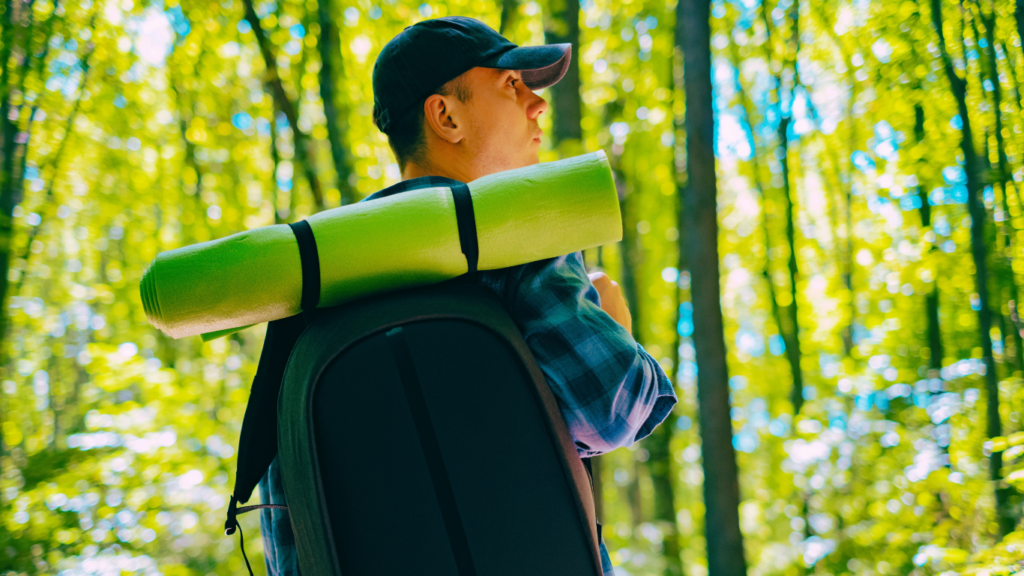
How to Start Hiking: Setting Fitness Goals
Setting realistic fitness goals is another important part of integrating hiking into your long-term routine. By defining what you want to achieve, you can work towards specific targets and keep yourself motivated as you progress.
Short-term goals:
For those new to hiking or looking to build confidence, start with short-term goals. This might include completing a 3-5 mile hike comfortably or successfully tackling a moderate trail with some elevation gain. These initial goals should focus on building endurance and gaining comfort on the trails. As you check off these early milestones, you’ll feel more prepared to take on longer and more challenging hikes.
Long-term goals:
Once you’ve mastered shorter trails, you can begin setting long-term goals. These could involve incorporating hikes into your regular fitness routine—such as hiking once or twice a week—or working up to more strenuous trails with steeper inclines and longer distances. Whether you’re aiming to complete a specific hike like a national park trail or looking to hike for endurance and fitness improvement, long-term goals provide a sense of purpose and direction for your hiking journey.
How to Start Hiking: Combining Hiking with Other Forms of Exercise
While hiking is an excellent full-body workout on its own, combining it with other types of exercise can enhance your performance and help you achieve greater fitness results. Incorporating strength training and cardio workouts into your routine will improve your stamina and physical ability on the trail.
Adding strength training:
Hiking naturally strengthens your legs, core, and back, but adding a few days of strength training to your routine can improve your performance. Focus on exercises that target your legs, core, and stability—like squats, lunges, and planks. These movements help build strength in the muscles you rely on most during a hike, such as your quadriceps, glutes, and core muscles. Increased muscle strength will help you handle steeper inclines and carry heavier loads on longer hikes with less fatigue.
Cardio workouts for endurance:
If you’re looking to improve your endurance for longer hikes, incorporating other cardio workouts can make a big difference. Activities like cycling, swimming, or running help boost your cardiovascular health, which in turn improves your stamina for extended hikes. By building a strong cardio foundation, you’ll find it easier to maintain a steady pace over long distances and feel less winded on difficult trails.
Creating a long-term hiking routine is a rewarding way to stay fit, enjoy nature, and challenge yourself. By tracking your progress, setting achievable goals, and combining hiking with other forms of exercise, you can ensure a balanced and effective fitness plan. Whether you’re just starting out or you’re already familiar with how to start hiking, this approach will help you stay motivated and continue making strides toward a healthier lifestyle. As you integrate hiking into your routine, you’ll not only see improvements in your physical fitness but also gain a sense of accomplishment and well-being from each adventure on the trail.
How to Start Hiking: Advanced Tips for Taking Your Hiking Experience to the Next Level
Once you’ve mastered the basics of how to start hiking and have established a routine, you may want to take your hiking experience to the next level. Whether you’re aiming for improved fitness, weight loss, or simply a greater challenge, incorporating advanced techniques can enhance your hiking journey. In this section, we’ll discuss how to integrate interval training into your hikes, use hiking as a weight loss tool, and prepare for longer, more strenuous hikes.
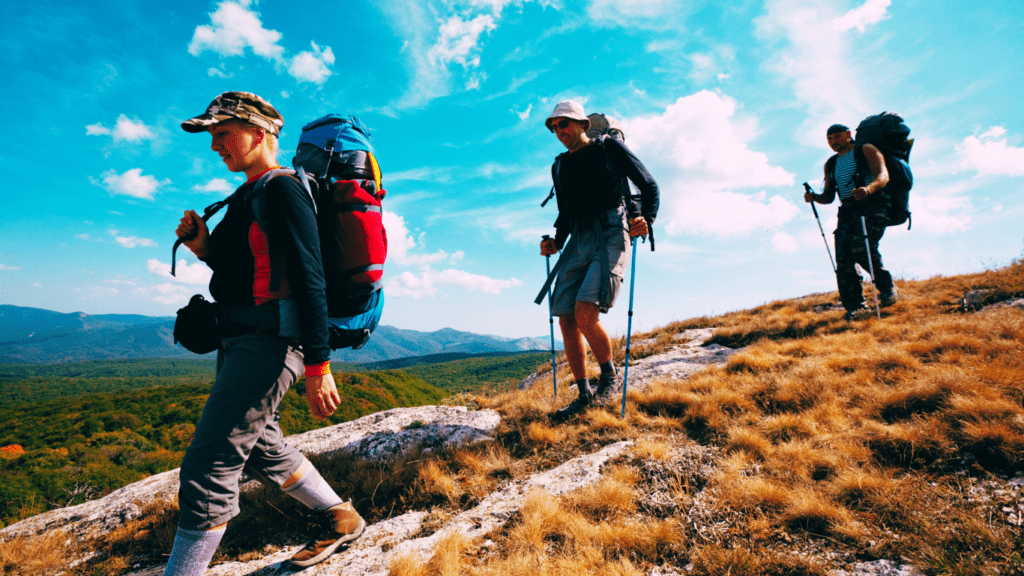
How to Start Hiking: Incorporating Interval Training into Hikes
One effective way to elevate your hiking experience is by adding interval training into your routine. This method can help you boost your cardiovascular fitness and calorie burn during your hikes.
Adding short bursts of jogging:
On flatter sections of your hike, consider integrating short bursts of jogging or fast walking. For example, you might walk briskly for five minutes and then jog for one minute. Repeat this pattern throughout your hike. This approach not only makes your workout more dynamic but also improves your endurance and speed over time. By incorporating these intervals, you’ll challenge your body in new ways and can even turn a leisurely hike into a more vigorous workout.
Benefits of high-intensity interval training (HIIT):
The benefits of HIIT are numerous. It boosts your metabolism and increases calorie burn both during and after your workout. By pushing yourself harder for short periods, you can elevate your heart rate and activate more muscle fibers, which can lead to improved cardiovascular health and better overall fitness. This method can be particularly effective if you’re looking to get more out of your hiking sessions and are focused on achieving specific fitness goals.
How to Start Hiking for Weight Loss
Hiking is a fantastic way to lose weight and maintain a healthy lifestyle when approached strategically. To maximize its effectiveness, it’s essential to understand how to create a calorie deficit and how hiking can fit into your overall fitness and nutrition plan.
Creating a calorie deficit:
To lose weight, you need to burn more calories than you consume. Hiking can be an effective form of cardio that helps you achieve this. Depending on your weight, the intensity of your hike, and the terrain, you can burn anywhere from 300 to 600 calories or more per hour. By making hiking a regular part of your fitness routine, you can increase your daily calorie expenditure, aiding in weight loss efforts.
Calculating daily calorie needs:
To better understand how hiking fits into your overall plan, start by calculating your daily calorie needs. You can use online calculators that factor in your age, weight, height, and activity level to determine how many calories you need to maintain your weight. Once you have this number, you can plan your hiking frequency and intensity to ensure you create a calorie deficit. For example, if your maintenance level is 2,200 calories, aim to consume fewer calories on days you hike or add longer hikes to your routine to help with weight loss.
Preparing for Longer, More Strenuous Hikes
As you become more comfortable with hiking, you may want to challenge yourself with longer, more strenuous hikes. Preparing for these hikes requires some planning and physical conditioning to ensure a safe and enjoyable experience.
Building up to full-day or multi-day hikes:
Start by gradually increasing the distance and difficulty of your hikes. If you typically hike 3-5 miles, work up to full-day hikes that could range from 8-12 miles. You can also try multi-day hikes by setting up camps or staying in huts along the trail. As you build your endurance, your body will adapt to the longer distances, making each hike more manageable.
Packing light for extended hikes:
When preparing for longer hikes, one of the most crucial aspects is to pack light. Focus on taking only the essential gear and supplies to reduce your load. A lightweight backpack with essential items—such as a first aid kit, water, snacks, and navigation tools—will keep you agile on the trail. Opt for lightweight, high-calorie food options like energy bars, nuts, and dehydrated meals that can provide the nutrients you need without weighing you down.
Hydration strategies:
Hydration is vital, especially on longer hikes. Aim to drink water regularly throughout your hike, and consider carrying a hydration reservoir to make sipping easy while on the move. On longer trips, think about bringing water purification tablets or filters to refill from natural water sources, reducing the weight of your initial water load.
New Chart: Tracking Your Hiking Progress & Fitness Goals
| Progress Metric | Short-Term Goal | Long-Term Goal | How to Track Progress |
|---|---|---|---|
| Distance Covered | Complete 3-5 mile hike comfortably | Complete 8-12 mile hikes consistently | Use fitness apps like AllTrails, Strava, or a GPS watch to log miles. |
| Elevation Gained | Hike trails with minimal elevation gain | Tackle trails with significant elevation gain (e.g., 2,000+ feet) | Track elevation via apps or watch; use elevation graphs to monitor improvement. |
| Calories Burned | Aim to burn 300-500 calories per hike | Increase calories burned by 20-30% with steeper terrain and longer hikes | Use fitness trackers or apps to track calories burned during hikes. |
| Pace (Speed) | Walk at a moderate pace (2-2.5 mph) | Increase pace to 3-4 mph on moderate to difficult trails | Use fitness trackers to monitor speed (distance/time). |
| Heart Rate Zones | Stay in moderate intensity (50-70% HR max) | Aim for vigorous intensity (70-85% HR max) for HIIT or steep inclines | Use heart rate monitors or smartwatches to track your heart rate during hikes. |
| Strength & Endurance (Muscle Fatigue) | Finish a hike without fatigue or muscle strain | Hike difficult terrains with little recovery time, carrying a heavier pack | Track muscle fatigue through self-assessment and log when you feel fatigued or energized. |
| Consistency (Frequency of Hikes) | Hike once or twice a week | Hike 3-4 times a week or integrate into weekly workout plan | Keep a hiking journal or log in an app to track the frequency and variety of your hikes. |
Chart Explanation:
- Short-Term Goal vs. Long-Term Goal: This section shows both what a beginner could realistically aim for in the early stages and what a more seasoned hiker might work towards after consistent practice.
- Tracking Progress: For each progress metric, the chart suggests how hikers can measure and track their improvements, whether through apps, wearables, or self-assessment. This helps beginners stay focused on tangible achievements.
As you explore these advanced tips for taking hiking to the next level, remember that consistency and gradual progression are key. By incorporating interval training into your hikes, using hiking as a tool for weight loss, and preparing for longer treks, you can significantly enhance your hiking experience and overall fitness. Ultimately, the journey of how to start hiking can evolve into a fulfilling, lifelong adventure, offering both physical benefits and mental clarity as you connect with nature.
Motivation and Mindset: Staying Consistent and Enjoying the Journey
Embarking on your hiking journey is just the beginning. To fully experience the benefits of this activity, it’s essential to maintain motivation and the right mindset. Understanding how to stay consistent while enjoying the process can lead to a more fulfilling and long-lasting relationship with hiking. In this section, we’ll explore tips for staying motivated and emphasize the importance of enjoying the journey as you learn how to start hiking.

How to Start Hiking: Tips for Staying Motivated
Staying motivated can be one of the biggest challenges for any outdoor enthusiast, especially for those just learning how to start hiking. Here are some effective strategies to help keep your spirits high and your feet moving.
Hiking with a friend or group:
One of the simplest ways to stay motivated is by hiking with a friend or joining a group. Sharing the experience with others creates a sense of accountability and camaraderie that makes hiking more enjoyable. Whether it’s a close friend or a local hiking group, having someone to share your journey with can keep you excited about your next outing. You can encourage each other, share tips, and even celebrate your achievements together.
Setting challenges:
Creating personal challenges is another excellent way to stay motivated. You might aim to complete a set number of miles each week or set a goal to try new trails regularly. These small challenges can help you measure your progress and keep your hiking routine fresh and exciting. You could also participate in hiking events or challenges, like hiking a specific trail within a certain timeframe, which adds an element of fun and competition.
Enjoying the Process
While achieving your fitness goals is rewarding, the true value of hiking lies in the journey itself. Emphasizing enjoyment during your hikes can significantly enhance your experience and keep you coming back for more.
Connecting with nature:
One of the greatest benefits of hiking is the opportunity to connect with nature. Being outdoors has profound mental health benefits, including reducing stress and anxiety. Take time to appreciate your surroundings—observe the trees, listen to the birds, and feel the wind on your face. This connection with nature can bring a sense of peace and fulfillment that enhances your overall well-being. When you focus on the beauty of your environment, it shifts the emphasis from simply completing a hike to enjoying the experience.
Remembering that progress is personal:
As you learn how to start hiking, it’s important to remember that everyone’s journey is different. Progress is personal, and it’s essential to celebrate your achievements, no matter how small they may seem. Did you hike a little further than last week? Did you try a more challenging trail? Recognizing these milestones can boost your motivation and help you appreciate how far you’ve come. Consider keeping a hiking journal to record your thoughts, experiences, and accomplishments after each hike. Reflecting on your journey can also remind you of the joy you find in this activity.
Staying motivated and enjoying the journey are crucial components of a successful hiking experience. By hiking with friends, setting personal challenges, and connecting with nature, you can maintain your enthusiasm for the outdoors. As you navigate your way through how to start hiking, remember that the path is as important as the destination. Embrace each moment spent on the trail, celebrate your progress, and let the natural world invigorate your spirit. Hiking is not just a workout; it’s an adventure, a chance to explore, and an opportunity to find joy in every step you take. With the right motivation and mindset, you’ll discover a lifelong passion for hiking that enriches both your physical health and mental well-being.
How to Start Hiking: Your Journey Begins Now!
As we conclude this comprehensive guide on how to start hiking, it’s important to reflect on the key points we’ve covered throughout the article. Whether you’re a beginner or someone looking to enhance your hiking experience, the insights shared here can help you embark on a rewarding journey.

How to Start Hiking: Key Points to Remember
- Benefits of Hiking: Hiking is a versatile activity suitable for people of all fitness levels. It improves cardiovascular health, builds muscle endurance, reduces stress, and promotes fat loss. Understanding these benefits can motivate you to incorporate hiking into your lifestyle.
- Starting Slow: For beginners, choosing easy trails and setting realistic goals are crucial for building confidence. Gradually increasing distance and difficulty ensures a positive experience as you learn how to start hiking effectively.
- Staying Motivated: Finding a hiking buddy or joining a group adds accountability. Setting personal challenges, such as completing a certain number of miles each week, keeps your routine exciting and encourages you to stay on track.
- Enjoying the Process: Connecting with nature enhances your mental well-being. Remember that progress is personal; celebrating small victories can boost your motivation and help you appreciate your journey.
- Advanced Techniques: For those ready to elevate their experience, incorporating interval training can enhance fitness results. Understanding how to use hiking for weight loss by creating a calorie deficit will help you reach your fitness goals more effectively.
- Preparing for Longer Hikes: Gradually build up to longer and more strenuous hikes, ensuring you pack lightly and focus on hydration. This preparation will enhance your overall hiking experience and make longer treks enjoyable.
Hiking has the potential to transform not only your physical fitness but also your mental well-being. It provides an opportunity to escape the hustle and bustle of daily life, allowing you to reconnect with nature while improving your health. No matter your current fitness level, there’s a trail waiting for you. Whether you’re starting with a simple walk in the park or tackling a more challenging hike, every step counts.
Now is the time to take that first step! Plan your first hike, whether it’s a local nature trail or a more ambitious destination. Remember to track your progress—this will not only motivate you but also help you see how far you’ve come. Make hiking a regular part of your fitness routine and watch as it transforms your life in both body and mind.
So grab your hiking shoes, invite a friend, and start exploring the great outdoors. Embrace the journey of how to start hiking, and let the trails guide you toward a healthier and happier you! Happy hiking!

